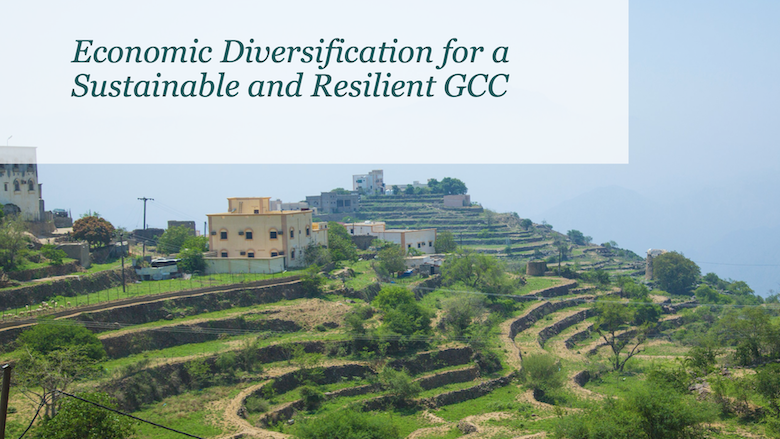Economic growth in the Gulf Cooperation Council (GCC) states significantly weakened in 2019; overall real GDP growth is estimated to drop to 0.8% in 2019 from 2% in 2018 before gradually gradually recovering in 2020-21.
This edition of the Gulf Economic Update explores the links between economic diversification and environmental sustainability. The analysis highlights the need to integrate environmental sustainability and ecosystem resilience considerations into the decision-making process on the diversification paths and options in the GCC countries.
The In Focus section in this edition of the Gulf Economic Update identifies three important ways through which regional investment strategies could better align diversification with environmental sustainability and climate resilience.
GCC Countries Outlook
Bahrain: Growth dropped to 0.8 (y/y) in the second quarter after posting a 2.6% growth rate in the first quarter of 2019. The oil and non-oil sectors made a roughly equal contribution to year-on-year (y/y) growth in the first quarter. Bahrain’s economy is expected to grow at an average rate of 2.3% over 2020-21.
Kuwait: Growth is expected to dip to 0.4% (y/y) in 2019 before picking up to 2.2% in 2020, when the OPEC production cuts are slated to expire, and 2% in 2021. Kuwait is the GCC’s most oil-dependent economy. The oil sector contributed 0.8 percentage points to growth in the first quarter but deducted 0.2 percentage points from growth in the second quarter.
Oman: The growth rate is projected to accelerate from an estimated 0% in 2019 to 3.7% in 2020 and 4.3% in 2021, supported by rising natural gas production. Negative nominal growth rates were reported in the first half of 2019. Nominal GDP growth was -2.2% (y/y) in the first quarter and -1.9% in the first half of the year.
Qatar: Growth contracted 1.5% (y/y) in the second quarter of 2019, after posting a tepid 0.8% growth rate in the first quarter. The downturn in the second quarter was driven by both the oil and non-oil economies. Qatar’s economy is projected to grow by a modest 0.5% in 2019 before accelerating to 1.5% in 2020 and 3.2% in 2021.
Saudi Arabia: Growth was modest at 1.7% (y/y) during the first quarter and 0.5% during the second quarter. Saudi Arabia’s GDP growth rate will likely slow to 0.4% in 2019 before rising to an average of 2.1% over 2020-2021. The global economy’s gradual stabilization at a forecast growth rate of 2.5% in 2021 should boost oil demand and stabilize oil prices at US$59 per barrel in 2020-21.
United Arab Emirates: Growth in the United Arab Emirates (UAE) surprised on the upside in the first quarter of 2019. While the UAE has not released economy-wide numbers for the second quarter, the Purchasing Managers’ Index (PMI) and other indicators of economic sentiment suggest that non-oil growth maintained its momentum from 2018 through at least mid-2019, while a 7% decrease in oil production weakened growth in the oil sector. The UAE’s GDP growth rate is projected to accelerate from 1.7% in 2018 to 3% by 2021.
